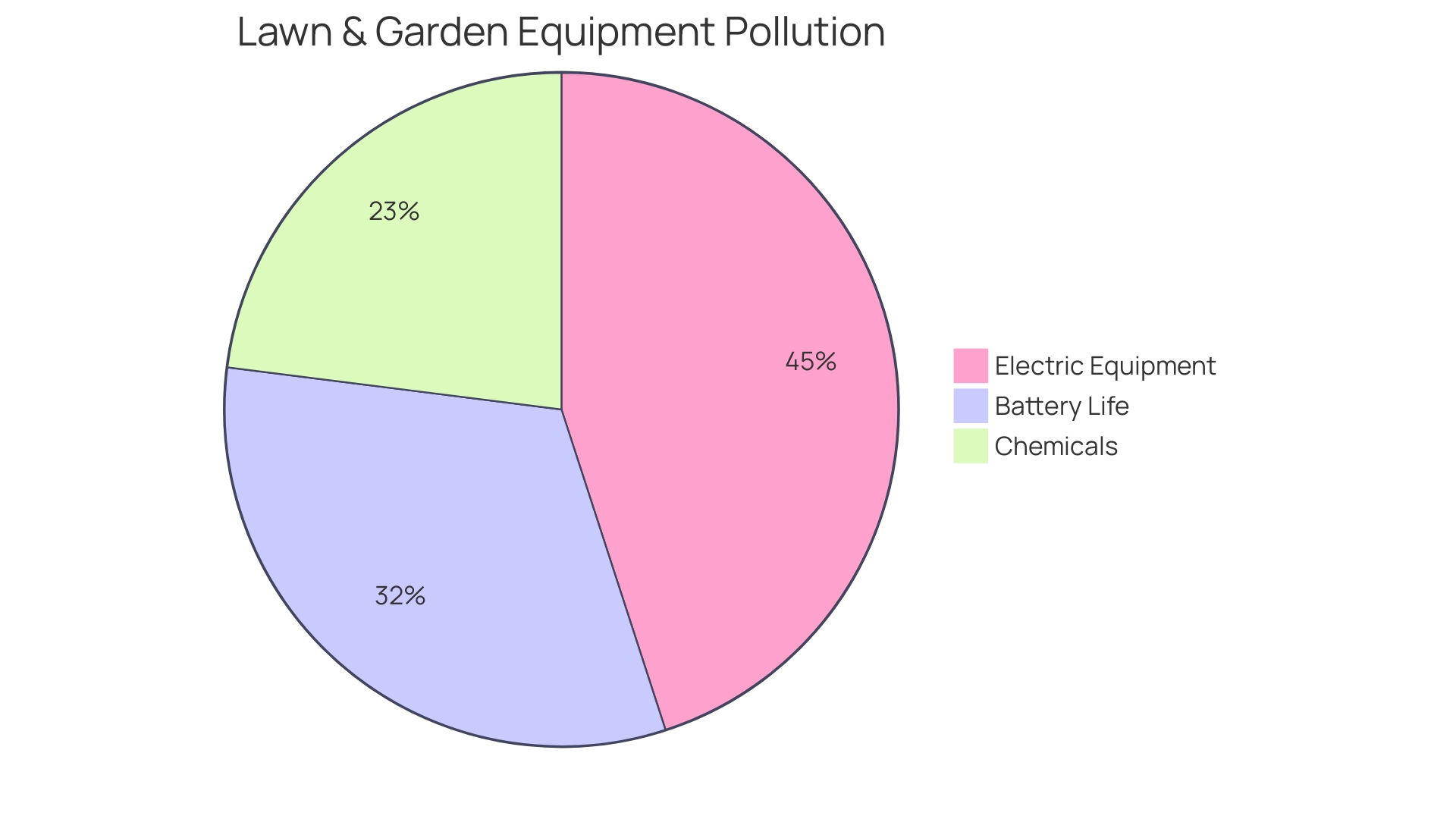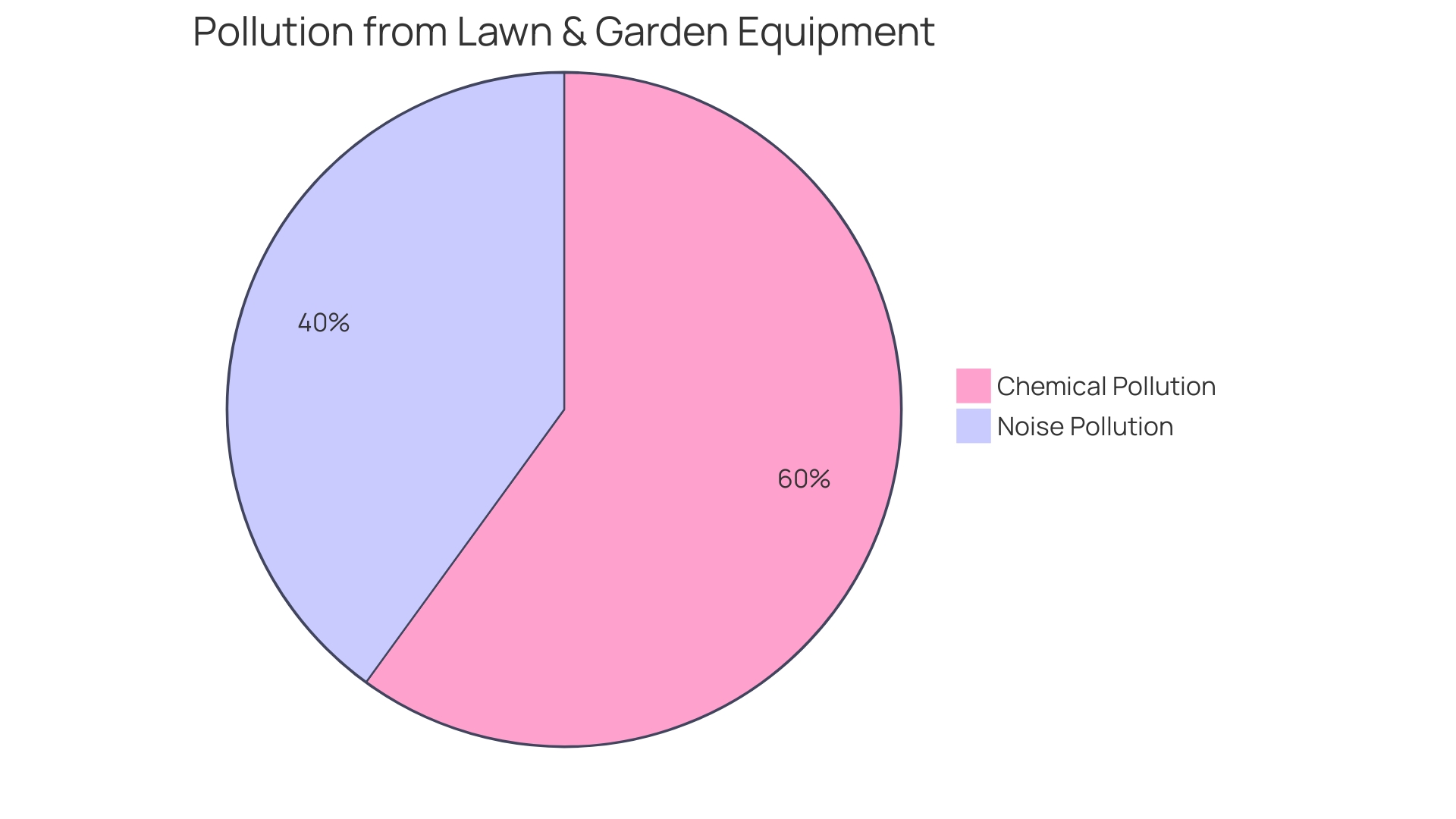Introduction
Opting for lawn aerator rentals is not only a savvy financial move but also an environmentally conscious decision. With the alarming statistics revealing that certain lawn equipment can emit as much pollution in one hour as a car driving hundreds of miles, the shift towards electric lawn care tools has become increasingly urgent. Traditional gasoline-powered lawn equipment releases a cocktail of carcinogenic chemicals such as benzene and formaldehyde, contributing to pollution right in our backyards where the most vulnerable—children and seniors—reside.
By choosing electric aerators, you're selecting a cleaner alternative that aligns with the growing trend in both residential and commercial sectors. Cities and states are actively encouraging the use of electric lawn equipment through educational programs, technical support, and policy changes, such as phasing out gas-powered tools in favor of quieter, less polluting options. Renting a lawn aerator not only caters to the health of your lawn by ensuring proper sunlight, water, and nutrient absorption but also supports the health of your community by reducing the environmental impact.
You gain access to a variety of aerators—core, drum, or grass—tailored to your lawn's specific needs without the worry of maintenance or storage, all while contributing to a cleaner, greener environment.
Benefits of Lawn Aerator Rentals
Opting for lawn aerator rentals is not only a savvy financial move but also an environmentally conscious decision. With the alarming statistics revealing that certain lawn equipment can emit as much pollution in one hour as a car driving hundreds of miles, the shift towards electric lawn care tools has become increasingly urgent. Traditional gasoline-powered lawn equipment releases a cocktail of carcinogenic chemicals such as benzene and formaldehyde, contributing to pollution right in our backyards where the most vulnerable—children and seniors—reside.
By choosing electric aerators, you're selecting a cleaner alternative that aligns with the growing trend in both residential and commercial sectors. Cities and states are actively encouraging the use of electric lawn equipment through educational programs, technical support, and policy changes, such as phasing out gas-powered tools in favor of quieter, less polluting options.
Renting a lawn aerator not only caters to the health of your lawn by ensuring proper sunlight, water, and nutrient absorption but also supports the health of your community by reducing the environmental impact. You gain access to a variety of aerators—core, drum, or grass—tailored to your lawn's specific needs without the worry of maintenance or storage, all while contributing to a cleaner, greener environment.

The Process of Core Aeration
For a lush, healthy lawn, core aeration is a key practice. It addresses soil compaction and fosters robust root development by extracting small plugs of soil, which in turn creates pathways for essential elements like air, water, and nutrients to reach the grass roots. Utilizing a rental core aerator can streamline this process, as its rotating tines delve into the earth, pulling out cores and leaving beneficial holes in their wake.
These openings alleviate compacted soil, enabling roots to expand and access vital nutrients more effectively.
Core aeration also optimizes water uptake, mitigating runoff and enhancing the efficiency of your watering system. Insights from agriculture underscore the importance of root penetration for maintaining soil quality — a principle that's equally relevant to your lawn. Crops like cereals, potato, and maize, which form the backbone of farming income, depend on cover crops post-harvest to maintain soil health.
These cover crops, although not harvested, play a crucial role in suppressing weeds, preventing nitrate leaching, and curbing erosion — benefits that are also afforded by thorough aeration.
The latest advancements in agricultural technology, such as CubicFarm Systems Corp's HydroGreen technology, which produces high-performance feed ingredients year-round, and CTi's water treatment solutions that promote root growth, are a testament to the continuous innovation aimed at overcoming challenges in root development and soil management. With this in mind, understanding and applying core aeration techniques can lead to a verdant and vibrant lawn, reflecting the same care and attention that farmers give to their most valuable crops.
Ideal Conditions for Aeration
Achieving a verdant and healthy lawn requires more than just routine care; it demands precision in the timing and method of aeration. A key element to successful lawn aeration is the soil's moisture content. It is imperative to aerate when the soil is moist but not drenched, as this condition allows the aerator to efficiently penetrate the soil without causing undue compaction or harm to the turf.
The optimal period for aeration aligns with the grass's growth phase, which typically falls within the growing season. Prompt recovery and closure of the aeration holes are facilitated by the grass's active growth during this time, ensuring a swift return to a lush and robust state. Furthermore, moderate weather conditions are preferable for aeration, steering clear of the extremes of heat or cold.
This considered approach to lawn aeration, with an eye on these ideal parameters, will enhance the performance of your lawn aerator rental and contribute to the overall vitality of your lawn.
Frequency of Core Aeration
Determining the right schedule for core aeration is essential for the health of your lawn, and it hinges on multiple elements. The particular type of grass you're cultivating, the quality of the soil, and the frequency with which the lawn is trodden upon all play pivotal roles. Typically, aerating once or twice annually suffices for most lawns.
That said, lawns subject to substantial foot traffic or those with clay-heavy soil, which is prone to compaction, might benefit from more regular aeration to keep the turf resilient.
Aeration is a critical component of lawn care—it facilitates soil decompaction, thereby enhancing the lawn's uptake of key nutrients and fostering robust root growth. With strategic aeration, your lawn can flourish even amidst environmental stressors such as harsh weather. Moreover, switching to electric aerators is a step towards sustainability, reducing the carbon footprint associated with lawn maintenance.
When you rent a lawn aerator, you're not just investing in the aesthetic appeal of your lawn but also contributing to a greener environment by avoiding the significant pollution tied to traditional gas-powered lawn equipment.

Conclusion
In conclusion, renting a lawn aerator is a smart financial and environmentally conscious choice. Traditional gasoline-powered lawn equipment emits harmful pollutants, while electric aerators offer a cleaner alternative. By choosing electric aerators, you contribute to the growing trend of sustainable lawn care in both residential and commercial sectors.
Core aeration is essential for a healthy lawn, and using a rental core aerator streamlines the process. It creates pathways for air, water, and nutrients to reach the grass roots, improving soil compaction and water uptake. Understanding and applying core aeration techniques can lead to a vibrant and robust lawn.
Timing and ideal conditions for aeration are crucial. Moist but not drenched soil, along with moderate weather, allows for efficient penetration without harming the turf. Aeration during the grass's growth phase promotes quick recovery and closure of the aeration holes, ensuring a lush and healthy lawn.
The frequency of core aeration depends on factors like grass type, soil quality, and foot traffic. Generally, aerating once or twice a year is sufficient, but lawns with heavy foot traffic or clay-heavy soil may require more frequent aeration. Aeration is vital for soil decompaction, nutrient uptake, and strong root growth.
Renting a lawn aerator not only benefits your lawn but also supports the environment. By reducing the carbon footprint associated with lawn maintenance, you contribute to a cleaner and greener community.
In summary, renting a lawn aerator provides multiple advantages, from promoting the health of your lawn to minimizing environmental impact. Choose electric aerators, follow proper aeration techniques, and enjoy a vibrant and sustainable lawn.
Make a sustainable choice for your lawn and the environment. Rent a lawn aerator today!




